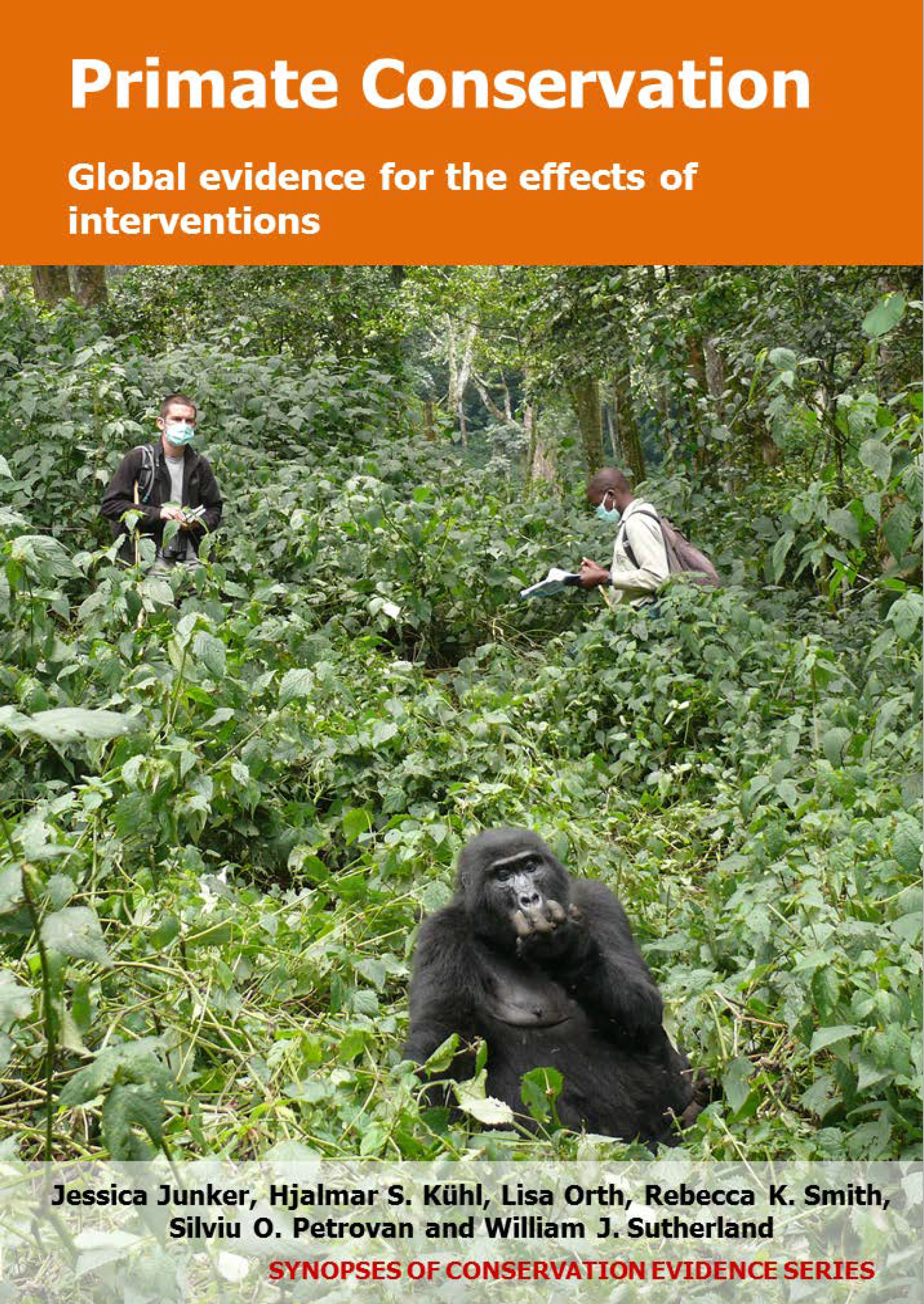Keep safety distance to habituated animals
-
Overall effectiveness category Unknown effectiveness (limited evidence)
-
Number of studies: 3
View assessment score
Hide assessment score
How is the evidence assessed?
-
Effectiveness
40% -
Certainty
10% -
Harms
0%
Study locations
Supporting evidence from individual studies
A before-and-after trial in 1994-1999 in mixed tropical forest in Conkouati-Douli National Park, Republic of Congo found that the majority of reintroduced central chimpanzees Pan troglodytes troglodytes that were monitored directly while maintaining a safety distance along with 16 other interventions, survived over five years. Out of 20 reintroduced chimpanzees that were radio-collared and followed at distances of 5-100 m, fourteen (70%) survived over five years after which the study ended. No statistical tests were carried out to determine whether the population decrease was significant. Rehabilitated orphaned chimpanzees underwent vaccination, treatment for parasites and veterinary screens before being translocated in four subgroups from the sanctuary to the release site with resident wild chimpanzees. Staff members were permanently present to monitor primate health, provide additional food if necessary, and detect and examine dead animals. The area status was upgraded from a reserve to a national park in 1999. People were relocated from the release site to a nearby village. Some chimpanzees were treated when sick or injured. TV and radio advertisements were used to raise chimpanzee conservation awareness and local people were provided monetary and non-monetary benefits in exchange for their conservation support. The study does not distinguish between the effects of the different interventions mentioned above.
Study and other actions testedA controlled study in 1964-2004 in tropical forest in Kabili-Sepilok Forest Reserve, Malaysia (2) found that rehabilitated and reintroduced orangutans Pongo pygmaeus morio that were visited by tourists that had to keep safety distances to the animals along with eight other interventions, decreased by 33% over 33 years (1964-1997). Infant mortality (57%) was higher than in other wild and captive populations, and the sex ratio at birth was strongly biased towards females (proportion males=0.11) compared to other wild and captive populations. Inter-birth-interval (6.1 years) was shorter than in other orangutan subspecies or species in the wild and in captivity, but similar to wild populations of the same subspecies. Mean age at first reproduction (11.6 years) was lower than in other wild and captive populations. More than 100 tourists/day visited the rehabilitation centre, but were prohibited from touching orangutans and had to keep a minimum distance of 5 m at all times. Orangutans were provided with daily supplementary food from 2-7 feeding platforms. Individuals underwent in-depth veterinary checks and were kept in quarantine for 90 days before release into the reserve, in which other rehabilitated orangutans lived. Staff and volunteers underwent medical checks. The study does not distinguish between the effects of the different interventions mentioned above.
Study and other actions testedA controlled, before-and-after study in 1967-2008 in tropical montane forest in Volcanoes-, Mgahinga-, and Virunga National Parks in Rwanda, Uganda, and the Democratic Republic of Congo (3) found that the mountain gorilla Gorilla beringei beringei population that was regularly visited by tourists and researchers which kept a safety distance to the animals along with ten other interventions, increased in size over time. Annual population growth was 4.1%, resulting in an overall population increase of 168% over 41 years. No statistical tests were carried out to determine whether this increase was significant. All visitors/researchers were expected to maintain a 7 m distance from the gorillas. As part of the ecotourism- and research programmes, gorillas were habituated to human presence, where visitors/researchers had to follow strict health procedures; these included wearing face-masks, spending only limited amounts of time with gorillas, ensuring that visitors/researchers were healthy, disinfecting visitor’s/researcher’s clothes, boots etc. Gorillas were continuously monitored by vets and received medical treatment if necessary. When gorillas died, their cause of death was clinically determined. The study does not distinguish between the effects of the different interventions mentioned above.
Study and other actions tested
Where has this evidence come from?
List of journals searched by synopsis
All the journals searched for all synopses
This Action forms part of the Action Synopsis:
Primate Conservation
Primate Conservation - Published 2017
Primate Synopsis





)_2023.JPG)














